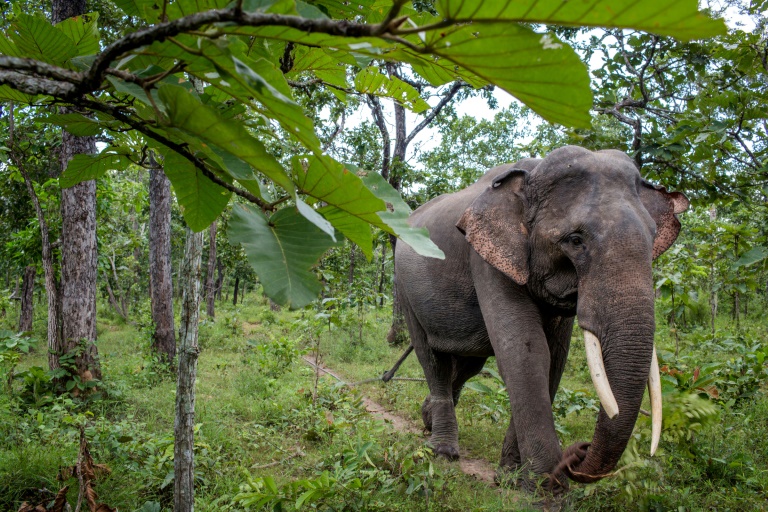
In a village in Vietnam’s “elephant kingdom”, a vendor holds up a severed, dried tail dotted with coarse hairs she promises will bring good luck -– a grim new trade that is endangering the country’s few remaining elephants.
“I’ll cut a hair off right in front of you here, so you can be sure it’s not fake,” said the saleswoman in Tri A village in the country’s forested central highlands.
A fondness for rings and bracelets embedded with elephant hairs is fueling a worrying fashion fad in a country notorious for its illicit wildlife trade, from rhino horns to pangolin scales, tiger teeth and bear bile.
The trend is putting a strain on the few surviving elephants in Vietnam whose hairs are plucked or tails cut off by poachers, leaving the animals without the crucial appendage used to swat flies and keep their backsides clean.
“The tail is very much a part of body hygiene, so by plucking the hairs out… or cutting the entire lower tail off, you’re putting a handicap on your elephant,” Dionne Slagter, Animal Welfare Manager at Animals Asia, told AFP.
With just 80 elephants left in captivity and about 100 in the wild — down from as many as 2,000 in 1990 — Slagter suspects most of the tails are being smuggled in from neighboring countries or as far afield as Africa.
The appetite for elephant parts is a cruel trend familiar to much of the region.
In nearby Myanmar elephants are killed to feed a growing demand at home and in China for their skin, believed to cure eczema or acne.
Loss of habitat and poaching has also badly dented elephant numbers in Thailand, Cambodia and Laos, where they were worshiped for centuries.
In Vietnam too, the M’nong and Ede ethnic minorities in Dak Lak province — dubbed the “elephant kingdom” for the large herds that once roamed its forests –- hold a deep spiritual reverence for the animals.
As legend goes, finding a tail hair by chance on the forest floor was considered good luck — local lore that has been peddled in recent years by shop owners selling the strands, along with ivory jewellery and Buddha statues that can fetch up to $900.
But actively cutting off tails or plucking hairs was never part of the tradition.
“They loved and considered elephants part of their family so they wouldn’t do anything to hurt them,” according to Linh Nga Nie Kdam, a researcher on Ede culture. “They never sold their hair.”




